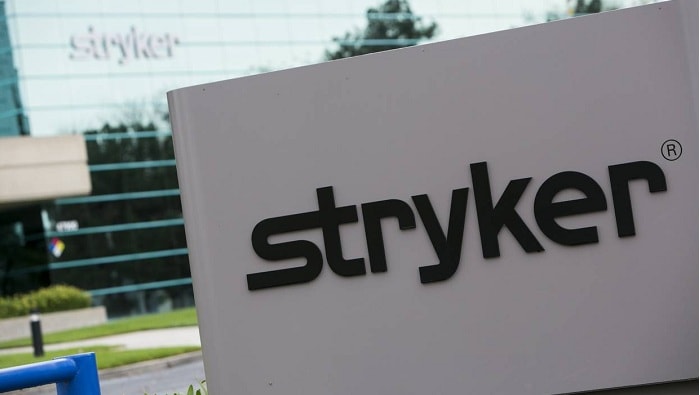Since the start of the COVID-19 pandemic, medical device makers have faced first the abrupt stoppage of many procedures using their products and then, once those procedures started up again, ongoing global supply shortages that have kept them from churning out those devices at previous levels.
Despite it all, Stryker, for one, hasn’t missed a beat. The devicemaker has only reported a drop in quarterly sales once since the pandemic set in—in the second quarter of 2020—and has otherwise remained on a solidly upward trajectory. That continued into its most recent earnings period, which wrapped up at the end of September with a 7.7% increase in net sales.
In total, the Michigan-based company reported net sales of $4.5 billion. The increase was led by its MedSurg and neurotechnology division, which saw a 10% year-over-year increase to reach sales of $2.6 billion. The quarter’s remaining $1.9 billion in sales came from the orthopedics and spine business, which registered a relatively modest 4.4% boost.
Those increases came even as Stryker, like many of its peers in the medtech industry, continues to struggle with supply shortages.
“On some products, we are very hand-to-mouth in terms of how we’re getting componentry to complete those products and ship them to customers,” Glenn Boehnlein, the company’s CFO, said on a call with investors on Monday. “I would tell you that with our order backlog at an all-time high, we are seeing pretty significant disruptions across our capital businesses. We’re very focused on getting product to customers.”
But those shortages are tempered by Stryker’s strong foothold in the industry, particularly in the realm of medical and surgical equipment, CEO Kevin Lobo noted on the call.
“Our problems are in the MedSurg side of our business. And on the MedSurg side of our business, we’re not going to lose sales,” he said. “If we have problems in the implant side, those sales would be lost to competitors. In this case, customers are waiting. The products aren’t urgent. We do have a plan to get these products to our customers.”
Lobo continued, “You’ll see some recovery in Q4 and into next year. But I really don’t expect to lose any of those sales, which gives me a lot of confidence going into next year that our positive sales trajectory will continue.”
With production expected to come closer to balancing the order book in the months to come, Stryker has made a cautiously optimistic adjustment to its full-year sales forecast, narrowing its estimates to “the higher end of our prior range,” Lobo said. That would see 2022 sales grow year-over-year by between 8.5% and 9%.
Even so, the company is taking a much less hopeful view toward its adjusted earnings per share. Previous estimates suggested they would clock in between $9.30 and $9.50 per share, but the company is now expecting them to land between $9.15 and $9.25—which would still one-up last year’s $9.09.
That slow-but-steady growth is expected to ramp up in the next year, the CEO said on Monday’s call.
“As we look ahead to 2023, we feel optimistic about growth with high customer demand and exciting new product launches,” Lobo said. “Though the inflationary pressures and supply chain challenges will continue to impact next year, the strong growth outlook, combined with our pricing and cost actions, will position us well to return to strong earnings growth.”

